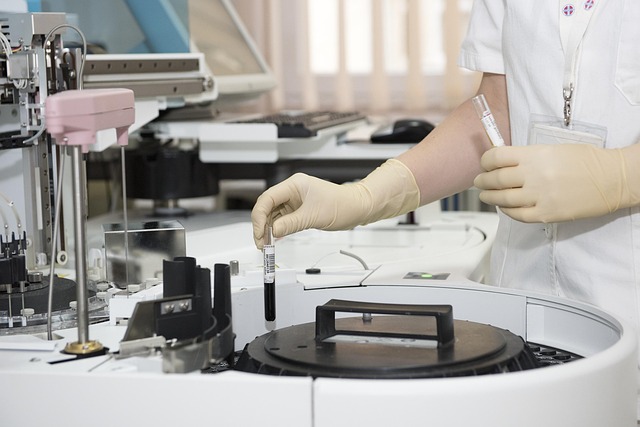Exploring Your Heritage with Genetic Analysis
Genetic ancestry testing has transformed how people explore their family history and cultural backgrounds. By analyzing DNA markers, these tests reveal ethnic origins, connect relatives across continents, and uncover migration patterns spanning centuries. Whether you're curious about your ancestral homelands or seeking to build a comprehensive family tree, modern genetic analysis offers unprecedented insights into your heritage through accessible and increasingly affordable technology.

Understanding your ancestry has never been more accessible than it is today. Genetic analysis technology allows individuals to trace their roots back through generations, revealing ethnic compositions and ancestral migration patterns. These tests examine specific DNA markers that connect you to populations and geographic regions worldwide, providing a scientific window into your family’s past that traditional genealogy alone cannot offer.
How to Find Your True Roots: Understanding DNA Testing Basics
Genetic ancestry testing works by comparing your DNA sample against reference databases containing genetic information from populations around the globe. When you submit a saliva or cheek swab sample, laboratories analyze hundreds of thousands of genetic markers called single nucleotide polymorphisms (SNPs). These markers carry signatures inherited from your ancestors, revealing which populations contributed to your genetic makeup. The process typically takes four to eight weeks, and results are delivered through secure online platforms with interactive tools to explore your heritage. Most tests examine autosomal DNA, which provides information about both maternal and paternal lineages going back approximately five to seven generations.
A Guide to Modern Genetic Ancestry Testing: What Tests Reveal
Modern genetic ancestry tests provide several types of information about your heritage. Ethnicity estimates break down your genetic background into percentages corresponding to geographic regions and population groups. These estimates have become increasingly refined as reference databases expand, now distinguishing between closely related populations. Many services also offer relative matching features that identify other users who share segments of DNA with you, potentially connecting you with distant cousins. Haplogroup assignments trace your direct maternal and paternal lineages back thousands of years, revealing ancient migration routes your ancestors followed. Some advanced tests include trait predictions, health predispositions, and carrier status for certain genetic conditions, though ancestry-focused tests primarily concentrate on heritage information.
Choosing the Right Testing Service for Your Goals
Selecting an appropriate genetic testing service depends on your specific ancestry goals and budget. Different companies maintain varying database sizes, which affects the accuracy of ethnicity estimates and the likelihood of finding genetic relatives. Some services specialize in particular geographic regions or ethnic groups, offering more detailed breakdowns for those populations. Consider whether you want only ancestry information or if health and trait reports interest you as well. Privacy policies vary significantly between providers, so review how companies store, use, and share your genetic data before submitting a sample. Database size matters for relative matching—larger databases increase your chances of connecting with family members who have also tested.
Understanding Your Ancestry Test Results
Interpreting genetic ancestry results requires understanding both the capabilities and limitations of current technology. Ethnicity estimates represent statistical approximations based on comparing your DNA to reference populations, not definitive statements about your identity. These estimates may shift as companies update their algorithms and expand reference databases. Confidence levels typically accompany regional assignments, with higher percentages generally more reliable than trace ancestry percentages below five percent. Genetic relative matches show the amount of shared DNA measured in centimorgans, helping determine relationship proximity. Close matches likely represent recent relatives within a few generations, while distant matches may share ancestors from centuries ago. Many platforms provide chromosome browsers and other tools for genealogists to analyze shared segments and confirm relationships.
Comparing Popular Genetic Testing Services
Several established companies dominate the genetic ancestry testing market, each offering distinct features and pricing structures. Understanding the differences helps you select the service best suited to your needs.
| Service Provider | Database Size | Key Features | Cost Estimation |
|---|---|---|---|
| AncestryDNA | 20+ million users | Largest database, family tree integration, extensive historical records | $99-$119 |
| 23andMe | 12+ million users | Health reports option, trait analysis, ancestry composition | $99-$229 |
| MyHeritage DNA | 5+ million users | Strong international coverage, family tree builder, photo enhancement tools | $79-$99 |
| FamilyTreeDNA | 2+ million users | Y-DNA and mtDNA testing options, detailed haplogroup information | $79-$359 |
| Living DNA | 1+ million users | Detailed British Isles breakdown, three-in-one ancestry test | $99-$149 |
Prices, rates, or cost estimates mentioned in this article are based on the latest available information but may change over time. Independent research is advised before making financial decisions.
Connecting Genetic Results with Traditional Genealogy
Genetic testing works most powerfully when combined with traditional genealogical research. DNA results provide clues and confirmations, but documentary evidence from records, family stories, and historical documents creates the complete picture of your heritage. Use ethnicity estimates to guide research into specific regions where your ancestors lived. Genetic relative matches can break through brick walls in family trees by connecting you with cousins who possess different pieces of the genealogical puzzle. Upload your raw DNA data to multiple databases and genealogy platforms to maximize matching opportunities. Join surname projects and geographic DNA projects that focus on specific family lines or regions. Remember that genetic inheritance follows random patterns, so siblings may receive different ethnicity estimates and match different relatives despite sharing the same ancestry.
Genetic ancestry testing offers a remarkable tool for exploring heritage, connecting with relatives, and understanding the migrations that shaped your family history. While results provide valuable insights, they represent one piece of the larger story of who you are and where you come from. Combining DNA analysis with genealogical research, family traditions, and historical context creates the richest understanding of your roots. As technology advances and databases grow, genetic testing will continue revealing new details about human ancestry and the connections that unite us across continents and centuries.




